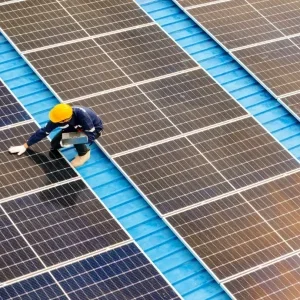
Water can prove to be a tyrant during mining or tunnelling operations, whether it is a result of seasonal rainfall or nearby bodies of groundwater. Effective waterproofing is especially important during tunnelling excavations for applications such as public subways, where even small leaks can cause considerable damage over long periods of time.
In fact, a lot of ongoing waterproofing and water control is repairing or improving old infrastructure that is being persistently worn away by groundwater ingress damage.
When it comes to mining, there is less concern about complete waterproofing and long-term erosion. Instead, the focus is on controlling the flow of water to prevent flooding or damage to equipment, but importantly, to ensure the excavations are safe for the miners
Mining Technology spoke with Ross Dimmock, vice president for Europe and the Middle East at Normet Group, about what waterproofing options are available to mining and tunnelling industries and how Normet supports its customers.
According to Dimmock: “Overall, there are two common methods for waterproofing. For rock tunnelling or rock mining with lots of water in the ground, one way to prevent water ingress that is very popular with our customers in Scandinavia and Hong Kong, or any areas with high water pressures, is to actually inject the rock with micro cements before excavating through them.
“This process is called pre-excavation grouting and it uses a very fluid consistency cement paste with very fine cement particles, which they pump and squeeze at high pressures into all the cracks in the rock about 25 meters ahead of the tunnel, and they do this systematically as they go through the ground to construct the mine or tunnel.
“This grouting seals the ground and stops water running into the tunnel, so that’s a popular approach in rock tunnelling and certainly adopted for some mines that suffer from high water ingress.”
Normet’s TamCrete range comprises microfine and ultrafine injectable cements that are designed to be durable, fast setting, non-hazardous for the environment and super penetrative for water-tight grouting.The MFC, SFC and UFC ranges are assured by the Cement Industry Quality Assurance Scheme, which is independently monitored by the British Standards Institute.
“The other approach is to wrap the inside of the tunnel with a polymer coating, a prefabricated sheet membrane that is welded around the joints to make a sort of raincoat,” Dimmock explains.
“Recently we’ve began spraying those, rather than using prefabricated sheets. We’ve actually brought in a sprayable waterproofing membrane, which we use alongside sprayed concrete. We spray the concrete rock support on the ground, followed by the membrane, and then spray some concrete on top of it like a sandwich.”
Normet’s waterproof membranes fall under its TamSeal range, which includes synthetic waterproofing membrane, high-performance HDPE preformed membrane for upwards bonding, self-adhesive waterproofing membrane, and mineral coated torch applied membrane.
For this innovative sprayed concrete method, Normet offers a range of spraying equipment that can be used with its SmartSpray technology, which automates the process for improved consistency and efficiency.
For ongoing maintenance, Normet also offers TamPur and TamAcryl foam and acrylic injectables that prevent water ingress through leaks that are observed are the project progresses. These solutions are ideal for rejuvenating tunnels that are beginning to deteriorate.

For more information about Normet waterproofing and water control solutions, or to contact them about support for your mining or tunnelling project, visit their website.






